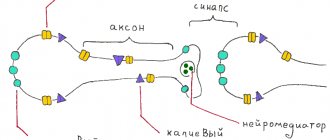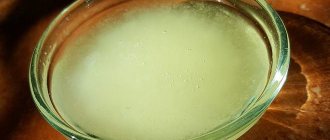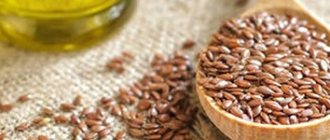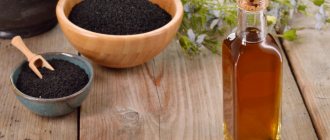Several years ago, studies were conducted that literally stunned: palm oil became the most widespread in the domestic industry. Naturally, logical questions arose: how useful is this product? And why did they begin to use it as a substitute for animal and vegetable fats that are much more traditional for us - butter, sunflower and others?
The answers were not the most reassuring. It turned out that palm oil has only one advantage - it is much cheaper than all its competitors! In addition, in mixtures it is difficult to distinguish from the much more expensive and popular butter.
What about the benefits or harms of palm oil? A lot of publications with completely opposite meanings immediately appeared here. The rising wave of criticism immediately began to be extinguished with pseudoscientific articles signed by unknown “doctors” of medical and biological sciences. Their authors tried to convince readers of the benefits of palm oil for humans, citing seemingly convincing arguments. But is it? Let's figure it out.
Is palm oil harmful to health?
It depends on what you compare it to. If with olive oil, then yes, because palm oil contains much more saturated fatty acids, which increase the risk of cardiovascular diseases. But if we compare it with animal fats, which it usually replaces, then palm oil is definitely less harmful. After all, animal fats contain even more saturated acids – up to 70%. To reduce health risks, it is enough to follow the norm: according to the American Heart Association, saturated fat should account for no more than 7% of daily calories. And it doesn’t matter what source they come from. As for the common fears that the body cannot process palm oil due to its refractoriness and it remains somewhere inside for centuries, this is a stupid myth. Everything is perfectly processed and does not turn into any “slag”. People have been eating lard for centuries - and nothing.
Composition and application
The oil palm produces two types of oil: one pressed from the pulp of the fruit (palm oil) and the other from its kernels (palm kernel oil).
Nutritional value 1 tbsp. palm oil:
- 114 kcal
- Fat: 14 g
- Saturated fat: 7 grams
- Monounsaturated fat: 5 g
- Polyunsaturated fat: 1.5 grams
- Vitamin E: 11% of RDA (Recommended Daily Intake)
The main type of saturated fat found in palm oil is palmitic acid, accounting for 44% of calories, plus large amounts of oleic acid, some linoleic acid and stearic acid.
Palm oil is 100% fat, half of which is saturated. It also contains vitamin E, and red palm oil contains antioxidants called carotenoids, which the body can convert into vitamin A.
- Like coconut oil, palm oil has a semi-solid structure at room temperature.
- Its taste is similar to carrot or pumpkin.
- This oil is especially suitable for curries and spicy dishes.
- Often used for sautéing or frying as it has a high smoke point of 232°C and remains stable at high temperatures.
Does palm oil have trans fats?
No. Trans fats are formed during the hydrogenation process, which turns liquid vegetable oil into solid margarine. Palm oil is initially solid and does not need to be hydrogenated. Now that the harm of trans fats has been proven, palm oil has just begun to be used as a relatively safe substitute for margarine. That is why its consumption in Europe is increasing. By the way, trans fats are also formed in the body of ruminants under the influence of enzymes. There can be up to 9% of them in cow's milk and meat! From this point of view, palm oil is also healthier than an animal product.
Varieties
The following types of oils are extracted from the fruits of the oil palm: raw palm, palm kernel. This is the most common and cheapest product among vegetable fats. Due to this, it is widely used in food production.
Currently, oil palm is cultivated in South America, West Africa, Indonesia, Malaysia and Southeast Asia.
Crude oil is obtained by processing the pulp of the fruit, which contains up to 70% fat. Only the product that has gone through several stages of refining is suitable for food. Otherwise, unrefined oil is used only for technical purposes - for making candles, soap and lubricating spare parts.
Ethical side of the issue
Palm oil production has negative environmental impacts. In recent years, demand for the product has led to a massive expansion of production in countries such as Malaysia, Indonesia and Thailand.
Tropical forests and peatlands are being destroyed to accommodate oil palm plantations. Almost half of the current plantings were planted with green forest 30 years ago.
Environmentalists predict that such deforestation will accelerate global warming, as trees play an important role in reducing greenhouse gas emissions.
Additionally, changes in the natural landscape lead to changes in wildlife and the extinction of some animal species. Orangutans are under threat of extinction.
Working conditions on palm plantations raise particular concerns. Workers experience unsafe working conditions, live in uninhabitable barracks and receive low wages.
In order to prevent an environmental disaster, the RSPO organization was created - a round table on sustainable palm oil production.
Experts have found that planting new palm trees in areas without forests and with low carbon stocks can reduce the amount of greenhouse gases emitted into the atmosphere by 60%. The organization issues certificates only to those manufacturers who follow certain recommendations:
- do not destroy forests;
- reduce the use of pesticides;
- respect workers' rights;
- take into account the opinion of local residents before planting new palm trees.
Large-scale planting of palm trees destroys the environment and wildlife. And workers on palm plantations often work in unbearable conditions. However, humanity is taking measures to combat these violations.
Production principle
On the plantations, fruits are collected, which are transported to the plant for further processing. The collected bunches are treated with dry hot steam to separate them. After this, the fruit pulp is pre-sterilized and then pressed. The resulting raw material is heated to 100 degrees and placed in a centrifuge to separate liquid and foreign matter.
Oil refining stages:
- elimination of mechanical impurities;
- hydration (extraction of phospholipids);
- neutralization (removal of free fatty acids);
- whitening;
- deodorization.
Palm kernel oil is a product obtained by extracting or pressing kernels from seeds. Its degree of digestibility is 97%.
Types of palm oil used in the food industry:
- Standard. Melts at a temperature of 36-39 degrees. Area of application: baking and frying. During the cooking process it does not create smoke or burning. Products prepared with standard palm oil should be consumed warm. Otherwise, the dish will harden and become covered with an unaesthetic film.
- Olein. The melting point of the product is 16-24 degrees. Used for frying meat and dough. Has the consistency of cream. Widely used in the cosmetics industry.
- Stearin. It has the highest melting point among the three types of oil. It is 48-52 degrees. It is the hardest fraction of palm oil. Industries of application: cosmetology, metallurgy, food industry. Included in margarine.
A distinctive feature of palm oil from other vegetable oils is its solid consistency. The longer a product is stored, the higher its melting point becomes. So, for fresh palm oil it is 27 degrees. And for a product with a week-long aging period it increases to 42 degrees.
Oil is a source of fat-soluble vitamins A, , . The freshly produced palm product is light orange in color due to its high beta-carotene content. In the food industry, only bleached oil is used. To do this, it is heated in an oven to 200 degrees and cooled. Under the influence of ultraviolet radiation and oxygen, the natural dye beta-carotene is destroyed, as a result, palm oil becomes discolored and loses part of its value.
Vitamins for the thyroid gland
The following vitamin groups provide a stable supply of hormones to the endocrine system:
- Retinol (A) – is responsible for protein biosynthesis. Vitamin group “A” has a beneficial effect on the immune system, improves the condition of the mucous membranes, bones and teeth. Retinol strengthens nails and hair, relieves swelling and sagging skin, and has a good effect on vision. Usually, the “A” + “E” complex is prescribed for prevention in order to enhance the positive effect of exposure.
- Vitamins B6, B12 – pyridoxine and cobalamin. Vitamin group “B” accelerates metabolic processes. Increased metabolism prevents the appearance of goiter, obesity, diseases of the cardiovascular and endocrine systems.
- Cholecalciferol (D) - comes from food and is also synthesized in the skin under the influence of moderate amounts of UV rays. A deficiency of this compound leads to the disease hypothyroidism (long-term deficiency of the hormone T3 and T4). Endocrinologists recommend eating foods high in this substance or periodically taking vitamin supplements.
- Antioxidants. This group includes tocopherol (E). In cosmetology, vitamin supplements based on this compound are very popular. They slow down the aging process, relieve skin puffiness, and smooth out wrinkles. Tocopherol improves the absorption of iodine compounds by cells. It is also assigned together with group “A” to mutually enhance the effect. However, doctors advise not to overuse tocopherol, since its excess with a lack of selenium causes hypothyroidism.
In addition to vitamin complexes, the health of the thyroid gland depends on the presence of microelements in the body. Important minerals include:
Iron is a trace element that affects the level of hemoglobin in human blood. Normal iron content helps to steadily transport oxygen to the organs and tissues of the body. As with “E” antioxidants, excess or deficiency of the mineral leads to problems with the endocrine system, in particular causing hyperthyroidism.
Selenium is a trace element, without which the production of hormones T3 and T4 is impossible. This mineral protects organs from oxidation, improves metabolism, controls growth and supports reproductive function in men. A lack of selenium leads to a disease such as Hashimoto's thyroiditis - problems with immunity.
Iodine - without this trace element the endocrine system will not be able to function fully. The mineral is involved in metabolic processes and in the synthesis of more than 100 enzymes, and regulates the water-salt balance of the body. A deficiency of the element leads to the formation of goiter and the development of hypothyroidism, and impairs intellectual abilities. Excess iodine compounds lead to poisoning of the body.
Use in the chemical industry
85% of Malaysian palm oil is used in the food industry, and only 15% is used in the chemical industry. Palm oil is used to produce soap, shampoos, cosmetics, lubricants and even biofuels. Many well-known cosmetic companies add palm oil to creams for the care of dry and aging facial skin and body lotions. With frequent use, palm oil restores firmness and elasticity to the skin, gives a toning and softening effect, and also helps to acquire an even and beautiful tan.
Benefit for health
It is too early to talk about the dangers of palm oil for human health, for now it is necessary to understand what benefits it brings. This oily substance benefits the stomach, and it also helps the intestines. It can be taken for the slightest damage to the mucous membrane, since in this case healing occurs much more effectively.
The product is beneficial for the liver in limited quantities and as part of food, as it helps to secrete enough bile. Helps treat stomach ulcers and gastritis. Bananas, flaxseed oil and aloe for gastrointestinal diseases.
Sometimes it is difficult to imagine how much harm palm oil causes to the body, when this product has a beneficial effect on metabolism with limited use. The oily substance will be an excellent helper in case of mental and nervous diseases; it also relieves chronic fatigue and improves brain activity.
It is especially useful for women to take this product, since it is fully enriched with fatty acids, as well as various vitamins, thanks to which the reproductive system works well. Recommended in case of diseases of the ovaries, uterus or breasts. We will talk about whether palm oil in infant formula is harmful a little later.
Palm oil has a beneficial effect on the epidermis. Relieves symptoms of psoriasis, acne, and helps with bedsores and burns. It is enough to lubricate those areas of the skin that need healing. To make the treatment process more effective, the substance is also taken orally.
Conclusion
For the human body, natural palm oil that has not undergone complex industrial purification and processing is valuable. The full technological cycle leads to oxidation of the product and loss of nutrients.
Red palm oil should be included in the diet, while maintaining a dosage of no more than 10 ml per day. Failure to follow the recommendations leads to the fact that palmitic acid begins to have a toxic effect on the body - it destroys bone tissue, causes metabolic disorders, and impairs brain activity. The result of chronic intoxication can be severe diseases (diabetes, obesity).
To minimize the negative impact of low-quality palm oil, you should exclude fast food, fast food products, processed cheese, yoghurt, flour, and confectionery products from your diet. Take the time to read the label. This is the only way you can be sure that cheese, ice cream, cake or cookies contain butter and not hydrogenated palm oil or stearin.
Author of the article:
Kuzmina Vera Valerievna |
Endocrinologist, nutritionist Education: Diploma of the Russian State Medical University named after. N.I. Pirogov, specialty “General Medicine” (2004). Residency at the Moscow State Medical and Dental University, diploma in Endocrinology (2006). Our authors
What kind of oil is this?
Palm oil is a type of vegetable oil that is produced from the fleshy part of the oil palm tree. Oil has been used by mankind since the times of Ancient Egypt for various food and household purposes.
Currently, Malaysia and Indonesia produce up to 80% of the world's palm oil. In 2021, palm oil exports exceeded the supply of other oils (including sunflower, rapeseed and soybean). It accounts for over 35% of the world production of oils of plant origin.
Palm oil is semi-solid at room temperature and melts at 35 degrees Celsius.
Palm kernel oil should not be confused with palm kernel oil. The latter is made from palm seeds and is considered more valuable, as it contains more biologically active substances.
Palm oil is obtained by processing oil palms. It has been used for many thousands of years and has been in high demand in recent years.











